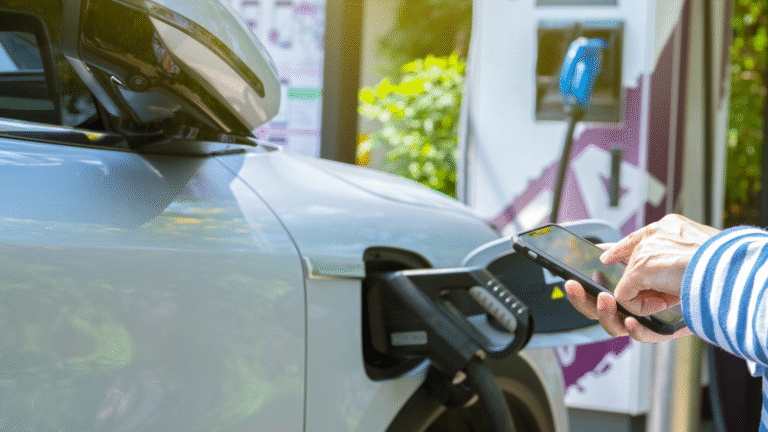While electric vehicles (EVs) may have a higher upfront price tag, the real financial story lies in the total cost of ownership (TCO). For Australians evaluating whether to go electric or stick with an internal combustion engine (ICE) vehicle, understanding TCO is essential for making a smart, long-term decision.
From fuel savings to government incentives, EVs are changing what it means to “own” a car. In this guide, we break down the costs over the life of a vehicle—so you can decide which option truly delivers better value for money.
—
Table of Contents
- What Is Total Cost of Ownership (TCO)?
- Upfront Costs: Purchase Price, Taxes & Incentives
- Operating Costs: Fuel vs. Electricity
- Maintenance and Servicing: Less to Worry About?
- Depreciation and Resale Value in Australia
- Case Study: EV vs. Petrol Car Over 5 Years
- FAQs
- Conclusion
—
1. What Is Total Cost of Ownership (TCO)?
TCO refers to all the costs involved in owning and operating a vehicle over a defined period (usually 3 to 10 years). It includes:
- Purchase price
- Fuel or energy costs
- Maintenance and servicing
- Registration and insurance
- Depreciation (loss in value)
- Government incentives or subsidies
TCO provides a clearer picture of vehicle affordability than sticker price alone—and helps Australian buyers compare true value between EVs and ICE vehicles.
—
2. Upfront Costs: Purchase Price, Taxes & Incentives
EVs in Australia typically have a higher purchase price due to battery and tech costs. However, this is changing fast.
| Vehicle Type | Average Entry-Level Cost (2025) |
|---|---|
| ICE (Petrol/Diesel) | $30,000 – $45,000 |
| EV | $38,000 – $60,000 |
⚖️ Government Incentives (Vary by State):
- NSW: $3,000 rebate + stamp duty exemption (for EVs under $68k)
- VIC: Zero Emissions Vehicle subsidy (up to $3,000)
- ACT: 2 years free registration + no stamp duty
These incentives narrow the initial cost gap significantly.
—
3. Operating Costs: Fuel vs. Electricity
Fuel and charging are major ongoing expenses.
| Fuel Type | Avg. Cost per 100km (2025 est.) |
|---|---|
| Petrol | $14–$18 |
| Diesel | $16–$20 |
| EV Charging | $3–$5 (home charging) |
💡 Tip: Charging your EV using solar panels can drop your costs even lower—often to zero.
📊 Annual Fuel/Energy Cost (15,000 km/year):
- Petrol Car: ~$2,250
- EV: ~$600 (home charger)
—
4. Maintenance and Servicing: Less to Worry About?
EVs have far fewer moving parts than petrol or diesel vehicles. No oil changes, no spark plugs, and fewer components to wear out.
| Item | ICE Vehicle | EV |
|---|---|---|
| Oil Changes | Every 10,000 km | Not required |
| Brake Pads Replacement | ~50,000 km | Longer lifespan (regen braking) |
| Timing Belts/Filters | Regular | Minimal |
🧰 Estimated Annual Maintenance:
- ICE: $800–$1,200
- EV: $300–$500
EVs also tend to have longer warranties (e.g. Hyundai and BYD offer 8-year battery warranties), which add peace of mind.
—
5. Depreciation and Resale Value in Australia
Depreciation is a hidden cost many buyers overlook. Traditionally, ICE vehicles lose 40–50% of their value in 3 years. EVs once depreciated faster—but that’s changing as demand rises.
Key resale factors:
- Battery health
- Government incentives at time of resale
- Brand reputation and technology support
🚗 Example:
- Petrol car bought for $40,000 may resell for ~$20,000 after 5 years.
- EV bought for $50,000 may resell for ~$30,000, particularly if EV demand increases.
With Australia’s 2035 internal combustion ban looming in some states, EV resale values are likely to remain strong.
—
6. Case Study: EV vs. Petrol Car Over 5 Years
Let’s compare two popular models in Australia:
| Category | Hyundai i30 (ICE) | BYD Atto 3 (EV) |
|---|---|---|
| Purchase Price | $32,000 | $48,000 |
| Govt Rebate (NSW) | $0 | -$3,000 |
| Fuel/Energy (5 yrs) | $11,250 | $3,000 |
| Maintenance (5 yrs) | $5,000 | $2,000 |
| Estimated Resale | $16,000 | $30,000 |
🟢 Total 5-Year Cost:
- ICE: $32,000 + $11,250 + $5,000 – $16,000 = $32,250
- EV: $45,000 + $3,000 + $2,000 – $30,000 = $20,000
💡 Outcome: The EV saves over $12,000 across five years, despite a higher upfront price.
—
FAQs
🟩 Is it cheaper to own an EV in Australia in 2025?
Yes—for many drivers, especially those who charge at home and drive over 10,000 km/year.
🔋 What about battery replacement costs?
EV batteries are built to last 8–15 years. Most are covered by warranties, and costs are dropping rapidly due to recycling and tech advancements.
⚡ Can I install a home charger in Australia?
Yes. Level 2 chargers are increasingly common, and rebates are available in some states to cover installation.
💰 Do EVs get cheaper over time?
Yes. Prices are dropping each year, and by 2027–2028, EVs are expected to reach price parity with ICE vehicles in Australia.
—
Conclusion
When it comes to long-term costs, electric vehicles are quickly becoming the more affordable option for Australian drivers. With lower running costs, fewer maintenance hassles, and rising resale values, EVs offer compelling value—especially when government incentives are factored in.
🚗 Thinking beyond the purchase price could save you thousands. The road to sustainable driving is also one of smart economics.
—
Compare the true cost of owning an electric vehicle vs. petrol car in Australia. Discover fuel, maintenance, and long-term savings with EVs in 2025.
